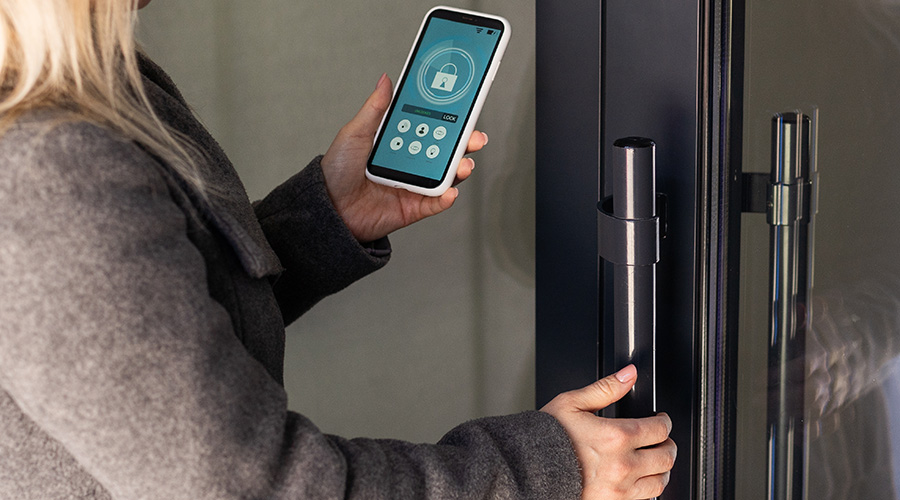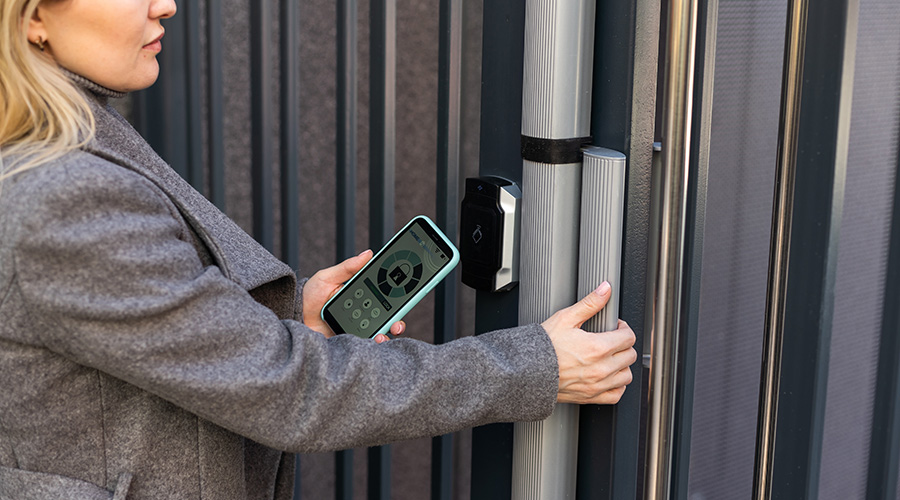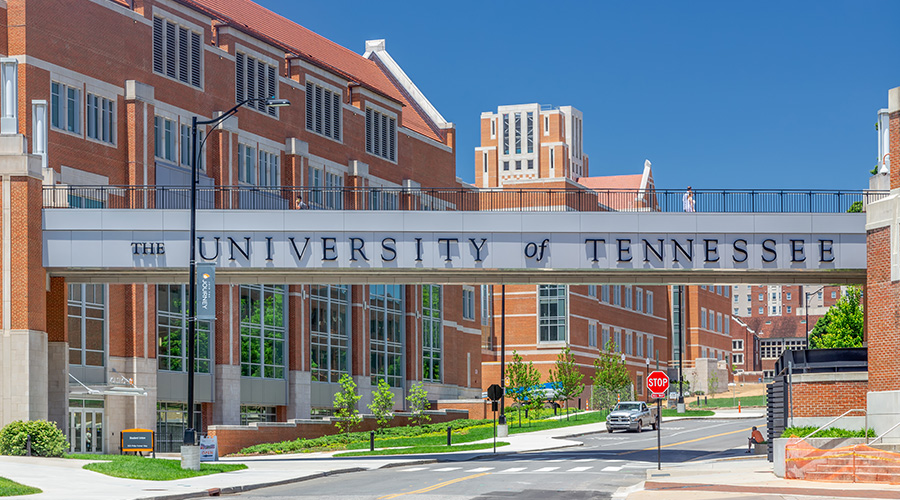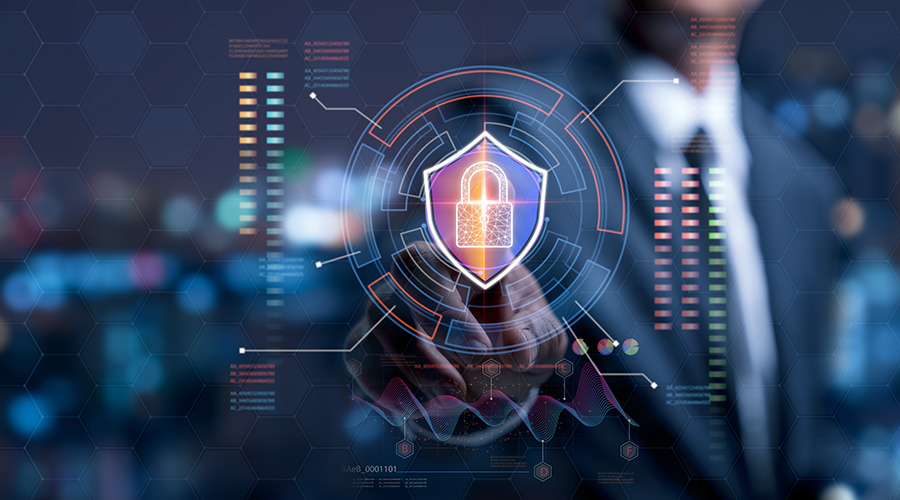From cutting-edge to off-the-shelf
Sophisticated CCTV and access control applications entering the market offer facility executives new security choices
Nineteen-year-old Megan Holden clocked out around midnight from her job at a Tyler, Texas., Wal-Mart. Minutes later, she was attacked. When Megan’s parents called police at 4 a.m. to report that their daughter had not returned home from work, police consulted footage shot from the parking lot security camera. The grainy surveillance video showed a man in a dark coat sprinting toward her as she neared her vehicle. The kidnapper shoved her into her truck, climbed in after her and drove off. Police immediately issued bulletins to law enforcement agencies across the state to search for Megan’s red Ford pickup truck.
It was already too late. Megan’s body was discovered a few days later in a roadside ditch, 400 miles from the scene of the abduction. She had died from a gunshot wound to the head.
Although the security camera footage was instrumental in immediately determining that foul play had occurred, the sad truth is that the camera did nothing to prevent the crime. With advances in security technologies — especially the degree to which various security components such as CCTV, access control, intrusion measures, and monitoring and alarm systems are now being integrated — facilities executives can use these technologies to protect people and property better than ever. While it would be fallacious to say that improved security measures definitely would have saved Megan’s life, there’s little doubt that increased security technology is helping facilities executives construct effective security plans that aim to stop crime before it ever takes place.
Closed-circuit television (CCTV) cameras is one area in which tremendous technological progress has been made, especially when combined with other facets of facilities security. According to Dave Smith, vice president of marketing for Pelco and chair of the Security Industry Association (SIA) CCTV industry group, there are three primary modes of CCTV use: deterrent, forensic and interdictive.
The original use of CCTV cameras was as a deterrent. The notion that “Big Brother” was watching was often enough to keep people from misbehaving. Today, though, CCTV is common enough that it has lost its novelty, reducing its effectiveness as a simple deterrent, especially for illegal entry or violent crime.
Evolving uses
As recording and storing technologies became more efficient, though, CCTV evolved into a forensic tool — that is, collecting evidence after an event has occurred, as was the case with the Wal-Mart parking lot tragedy. As CCTV is becoming more easily integrated with monitoring devices, alarm systems and access control devices, a third use of CCTV is gaining momentum: helping security personnel to identify and interrupt security breaches as they’re occurring, or even before they take place.
Intelligent video algorithms, such as sophisticated motion detection, can identify unusual walking patterns and alert a guard to watch a particular screen to which the video is fed. Object-recognition algorithms can identify someone who might simply be loitering, or even a briefcase or other suspicious object that is left somewhere it shouldn’t be. Again, the system can alert a monitoring guard so that appropriate action can be taken.
The most exotic intelligent video algorithm is facial recognition. However, most experts agree that use of this technology as an efficient tool in the private sector is still several years down the road.
Traditionally, intelligent video algorithms are components of a computer system in a security room to which video captured by an array of CCTV cameras is fed. But on the horizon, says Smith, manufacturers will be making cameras that can process the intelligent video algorithm right inside the camera.
Wide dynamic range is another technology that is becoming more prevalent on CCTV cameras. “Wide dynamic range means cameras can resolve details when there’s a tremendous amount of both light and dark areas in the same scene,” says Smith. “Traditional cameras can’t do that.”
Virtual guard tours
Smith also describes a cutting-edge viewing technology that he says is just beginning to be deployed. Multiple-image, dynamic flat-panel displays that use digital light processing technology will allow security personnel that are monitoring video feeds to arrange a number of different “screens,” however they wish, on a 50-inch virtual screen that is projected onto a viewing surface, such as a wall or screen. The single 50-inch virtual screen provides the same viewing area as 26, 9-inch monitors, but the display can also be configured so that there is one 14-inch screen, several 9-inch screens and maybe a couple 12-inch screens, or any other combination thereof.
Additionally, several 50-inch virtual screens can be butted together seamlessly, increasing the flexibility and scalability of the viewing area.
“If you can put a ‘screen’ on the wall and eliminate all rack space needed to mount traditional monitors, you can put a large amount of viewing area in a small amount of space,” says Smith. “You greatly reduce the overall cost because you don’t need expensive racks.”
Though facilities executives who deploy these new CCTV and video technologies will most likely do so with the goal of preventing security breaches, how the video is recorded and saved is still a critical consideration. While digital recording and storing techniques have increased the ease with which video can be accessed, technologies such as virtual guard tours and pre-alarm recording make video storage even more efficient.
A virtual guard tour eliminates the need for a security guard to do the traditional facility walk-through at scheduled times. A digital video recorder can be programmed to flash in sequence to each of any number of cameras linked at any interval a user chooses. The video can either be recorded or physically monitored, or both. Virtual guard tours reduce the need for expensive capacity on recording equipment because not every camera has to be recorded all the time. And it allows the guard more flexibility to monitor the access points deemed most critical.
Pre-alarm recording also saves money on recording capacity because it constantly records and then deletes video, unless something important happens. “If an alarm goes off, the system starts saving the image several minutes before the alarm occurred, instead of dumping images,” says Paul Martin, director of marketing for Honeywell. “Someone can see what happened before, during and after the event.”
Of course, pre-alarm recording technology assumes integration of CCTV and a recording device with an alarm or other intrusion detection system. In the past, alarm systems and alarm verification were often an inexact science. Facilities executives may have spent thousands of dollars per year for local law enforcement agencies responding to false alarms, and law enforcement agencies have become increasingly hesitant to respond to alarms without verification.
Now, if an alarm is triggered, video can be automatically sent to cellular phones, PDAs, laptops or other devices so that facilities executives can decide how to respond. “Alarm verification is increasingly important, especially off premises,” says David Avritt, president of SentryNet and chair of the SIA monitoring industry group. “If guards aren’t used, traditionally the police have been relied upon to respond to alarms. Video is the bridge.”
But even if there is a 24-hour guard whose job is alarm verification and response, integrated video and alarms systems can help immediately target security breaches so that the guard can react quickly and prevent property loss, or worse. And access control systems can be programmed to lock certain areas of the facility to help limit the search for a perpetrator.
Integrating systems
Like other elements of the total security package, access control devices are being more commonly integrated with all other aspects of a facility’s security plan. “Over the past five years, we’ve seen a real drive to system integration where access control is linked to video systems,” says Avritt. “Technology is moving so fast, end-users are having trouble keeping up.”
But, for facilities executives, that trouble may be mitigated by the “good problem” of having so many options that no matter what type of application is required, a solution can be designed to meet those needs.
“Advances have been made in the areas of encryption, reader and credential technologies and intelligent video tied to access control,” says Kim Loy, vice president of marketing for Group 4 Technologies. “Many of the advances currently being made are a direct result of requirements being published by the Homeland Security Department. However, the pressure that this has put on the industry to develop these technologies will provide greater levels of security to all facilities deploying these systems.”
Though preventing unauthorized entry is usually the primary focus of an access control system, these devices are increasingly being used to protect corporate intellectual properties as well. “When we think of access control, we tend to think of access to doors,” says Debra Spitler, president of OMNIKEY and chair of the SIA access control industry group. “Why not extend access control to PCs? The same card or credential that is used in the physical access control system can also be used to secure unauthorized access to PCs, networks and databases.”
Growing use
One area of specific credential technology that is being used more often to authorize access both to facility or zone entrance points — physical points — and to corporate networks, PCs and databases — logical points — is biometrics. These systems use fingerprint, facial, voice or eye-scan recognition to authorize a user, though fingerprint systems constitute about half of all biometrics systems sold, says Joseph Turek, CEO of Biometrics2000 and chair of the SIA biometrics industry group. Many times, though, biometric authorization is combined with some other form — either a card or PIN — to make the system more flexible.
“In normal security mode, you can use a card only,” says Jordan benShea, product marketing manager for Bioscrypt. “After hours or during heightened security you can add fingerprint authorization.” At the highest security risk, facilities executives could add a PIN to the authorization process as well, which means that to enter you would need something you have, something you know, and something you are, that is a card, a PIN and a fingerprint, says benShea.
Facilities executives should be careful to deploy biometrics only for installations for which there is a clear benefit. Misapplication of the technology can cause users or building occupants to become skeptical of its inherent worth. For instance, Turek remembers an installation where a fingerprint reader was installed on the gates of a swimming pool for children. Despite rules against it, children would leave the pool area after swimming and weren’t able to get back in because the biometrics device didn’t recognize their water-wrinkled fingerprints.
Another misapplication was a facial recognition system installed as an access control device for an operating room at a hospital. Doctors and staff entering the room were usually wearing surgical masks and would have to remove the masks to enter the room and then put them back on right after being authorized.
Despite the occasional misapplications, though, biometrics continues to be deployed for a variety of uses — from highly secure government buildings to resorts as a replacement for room keys.
Like biometrics systems, most other types of access control systems are flexible and can be scaled based on facilities executives’ needs and the external security climate. “The built-in scalability of many of today’s access control technologies provides a migration path that allows an organization to add features and expand the system as budgets allow without replacing the initial technology investment,” says Holly Sacks, vice president of marketing for HID. “Facilities executives can make technology choices based on what they need today and what they need in the future, rather than simply on what is available.”
But there are some growing pains as well. While systems are becoming more easily integrated and more flexible, lack of interoperability of disparate systems from different manufacturers can limit facilities executives to a few proprietary choices when expanding a system. Fortunately, the security industry is reacting to solve this potential problem, working to construct open architecture and open protocol standards to allow devices to communicate.
“As information technology departments become more involved with the deployment of security technology across their infrastructure, expectations of standards-based interoperability is increasing,” says Mark Peterson, director of the iTechnology design resource group at HID.
Access control systems, bridged to video and integrated with intrusion alarms and physical security guards, complete the total security package. As all of these elements become more easily connected, and the technology of each continues to improve, the potential for tragedies may be reduced. “In the immediate past, there were three different disciplines: CCTV, access control and alarm,” says Neal Heller, product manager for Panasonic. “In today’s world, these are all combined in one integrated platform we call security.”
Bill in Works to Offer Tax Deductions For Security Equipment Purchases
Partly as a reaction to the Sept. 11 terrorist attacks, Congress passed a bill that allowed a 50 percent bonus depreciation on facility capital purchases, such as security equipment. This bill has since expired, but the Security Industry Association (SIA) is working to draft a new security equipment-specific bill that would reinstate at least some tax benefits.
Bills had been proposed in the previous two sessions of Congress that would have again provided 100 percent tax expensing, but those bills never made it out of the Ways and Means Committee. “The problem was the bills were too expensive,” says Cathy Mrosko, SIA’s associate director of industry groups and government affairs. “In fact, they were so expensive, we couldn’t get anyone to tell us how expensive they were.” A key component to actually bringing a bill to a vote on the floor of the House is scoring the bill, or calculating how much the bill would cost. Ways and Means determined that even scoring the last two bills wasn’t a priority because they had no chance of passing.
To avoid that problem with the current bill, which is expected to be completed in mid-April, SIA has had meetings with Ways and Means Committee members to determine how to draft the bill to give it the best chance of getting to the House for a vote. SIA has also formed a coalition of organizations, including the Food Marketing Institute, the Real Estate Roundtable, the American Hotel and Lodging Association, and other industries with a vested interest in security equipment, to provide input for the new bill.
The new bill is being scored by outside consultants to determine a balance between the exact expensing percentage and a time period that would give the bill the best chance of being enacted. The new bill also covers a wide range of qualified security devices, which makes it more expensive but is necessary if the bill is to be worthwhile to those purchasing security devices and needing the tax deduction.
“The President has stated that he would like to review the tax codes and make revisions a priority during his second term,” says Mrosko. “It is our hope that perhaps our bill might get more attention, especially if it is drafted to be cost-effective and purpose-effective as well.”
|
About the Security Industry Association
Formed in 1969, the Security Industry Association (SIA) provides its members with a full-service, international trade association promoting growth, expansion and professionalism within the security industry by offering education, research, technical standards, representation and defense of member’s interests.
SIA has more than 400 member companies representing manufacturers, distributors, service providers, integrators and others. SIA members are involved in a range of market segments including CCTV, access control, biometrics, computer security, fire/burglar alarms and home automation. Members work together to address issues facing the industry and develop programs to enhance the environment in which they sell products and services.
|
Related Topics:











